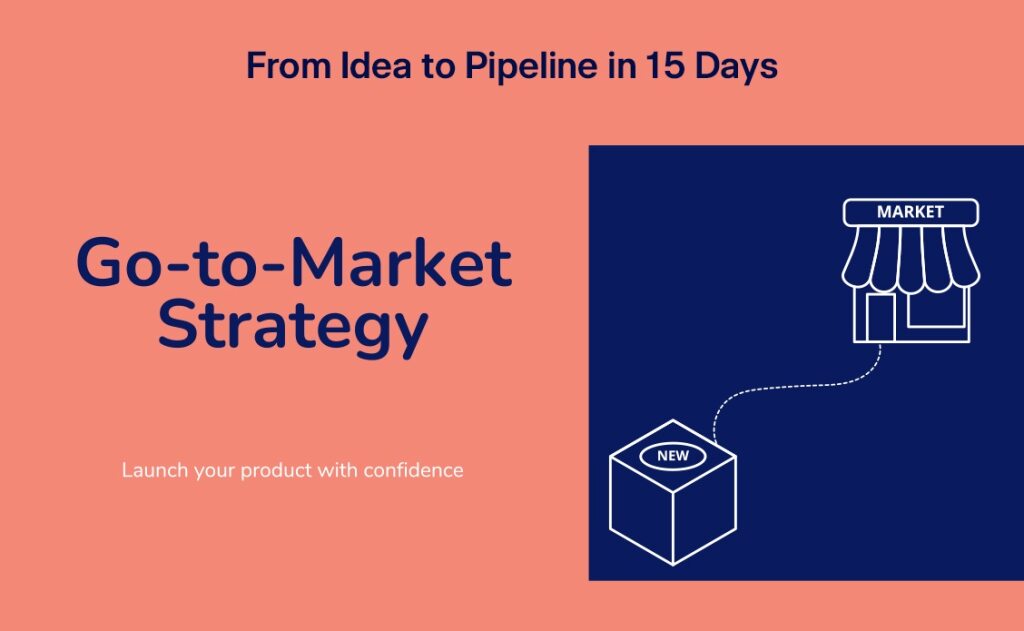The Brutal Reality:
“85% of outbound motions are expensive lead generation theater. If your sales team can’t predictably manufacture pipeline from cold prospects, you’re one inbound drought away from missing your growth targets by 40%+.”
I’ve watched too many founders celebrate 100+ demo bookings while their conversion rates hover at 2%. The disconnect? They built activity engines, not revenue engines. Outbound without systematic repeatability is just expensive hope.
At NextAccel, we’ve diagnosed this pattern across dozens of portfolio companies: scattered outreach tactics that burn cash without building predictable pipeline. The solution isn’t more tools or more reps, it’s surgical precision around what actually converts strangers into customers.
Revenue Stalls When Outbound Becomes Hope-Based
Image idea: A split-screen view showing chaos vs. system. Left side: scattered sales activities with arrows pointing everywhere, representing random outreach. Right side: a clean, flowing pipeline with organized stages and clear progression, representing systematic outbound.
Here’s the NextAccel playbook for building outbound engines that scale with mathematical precision.
Step 1: Reverse-Engineer Your Buyer’s Attention (DefineTheir Demographics)
Ask your sales team this diagnostic question:
“Of our last 20 outbound-sourced deals, what specific business trigger caused them to take the first meeting? If you can’t name the trigger, you’re prospecting blind.”
Most outbound fails because teams confuse firmographic fits with buying intent. Your ICP isn’t “Director of Marketing at 50-500 person SaaS companies”—it’s “Marketing leaders whose current tech stack can’t support their Q2 product launch timeline.”
The NextAccel DEFINE Framework for Outbound Precision:
- Trigger Mapping: Identify the 3-5 business events that create genuine urgency for your solution
- Pain Hierarchy: Rank prospect pain points by purchase influence (budget holder vs. end user)
- Timing Intelligence: Map buying cycles to fiscal calendars, industry events, or seasonal patterns
- Stakeholder Choreography: Blueprint who influences decisions and in what sequence
I run clients through this exercise: “If you could only prospect 100 accounts next quarter, which 100 business situations would create the highest probability of 6-figure deals?”
Generic demographic targeting gets 1-2% response rates. Trigger-based prospecting gets 15-20% because you’re solving immediate problems, not creating theoretical demand.
Step 2: Build Message Architecture That Survives Scale (The DEPLOY System)
Here’s the uncomfortable truth: 90% of outbound sequences sound like every other vendor. Prospects delete them reflexively because they follow the same tired playbook—pain/solution/social proof/CTA.
Your outbound motion needs message differentiation that compounds with volume, not dilutes.
The NextAccel Message Stack:
- Touch 1: Business trigger acknowledgment (no pitch, just relevance)
- Touch 2: Insight that reframes their problem (demonstrate expertise)
- Touch 3: Proof of outcomes with similar triggers (case study without selling)
- Touch 4: Direct ask tied to specific value hypothesis
I’ve tested this across 50+ B2B companies. Traditional sequences plateau at 3-4% response rates. Trigger-based message architecture sustains 12-18% response rates even at high volume because each touch builds credibility instead of creating pitch fatigue.
Tactical Implementation:
- Research Workflows: 15-minute account research protocol that identifies genuine business triggers
- Message Personalization: Template framework that scales genuine insights, not surface-level customization
- Content Assets: Create value-first resources that prospects actually forward internally
- Follow-up Choreography: Sequence timing based on buyer behavior signals, not arbitrary calendars
The goal: every prospect interaction should feel like strategic consultation, not vendor prospecting.
Step 3: Instrument for Optimization, Not Activity (The DELIVER Discipline)
Most sales teams track emails sent and meetings booked. But those metrics optimize for activity, not revenue impact.
I ask clients: “What’s your outbound-to-closed-won conversion rate by prospect segment? If you can’t answer in 30 seconds, you’re flying blind.”
The NextAccel Outbound Intelligence Stack:
- Response Rate by Message Type: Which angles generate genuine interest vs. polite deflection
- Meeting-to-Opportunity Conversion: Which prospects waste sales time vs. advance pipeline
- Sales Cycle Velocity: How outbound-sourced deals compare to inbound timing
- Deal Size Analysis: Whether cold outreach generates premium or discount pricing
- CAC Payback Period: True cost of customer acquisition when including fully-loaded outbound expenses
This isn’t vanity metric tracking—it’s revenue engine optimization. Every metric connects to a specific lever you can adjust to improve conversion at scale.
Quarterly Diagnostic Exercise:
“If we doubled our outbound volume tomorrow, which conversion bottleneck would break first? Fix that before scaling activity.”
Common optimization discoveries:
- Message positioning drives 80% of response rate variance
- Prospect research quality predicts meeting-to-opportunity conversion
- Follow-up timing affects deal velocity more than initial message quality
- BDR-to-AE handoff process determines win rate differential
Step 4: Systematize Ownership (Not Delegate to Hope)
Here’s what I tell every founder: “Repeatable outbound is a company discipline, not a sales tactic. If your Head of Sales is also managing outbound optimization, you’re asking them to be surgeon and architect simultaneously.”
The NextAccel Outbound Operations Owner becomes your:
- Conversion Analyst: Diagnosing why response rates plateau or decline
- Process Architect: Building workflows that maintain quality at scale
- Training Engineer: Codifying what works into repeatable playbooks
- Technology Optimizer: Ensuring your tools enhance human performance, not replace it
Without dedicated ownership, outbound stays reactive and inconsistent. With systematic ownership, you build a pipeline manufacturing system that operates independently of individual rep performance.
Final Framework: Predictability Drives Premium Valuations
Your outbound motion isn’t a lead generation tactic, it’s proof of your go-to-market discipline. Acquirers pay premiums for companies that can predictably manufacture demand, not just respond to inbound interest.
When growth slows or competition intensifies, systematic outbound becomes your revenue insurance policy. You control pipeline generation instead of hoping marketing channels recover.
At NextAccel, we’ve helped dozens of founders transform scattered prospecting into predictable revenue engines.
Want to diagnose your outbound effectiveness?
Contact us for our 90-minute Outbound Revenue Engine Audit and identify which conversion levers can drive the biggest impact in your next 90 days





